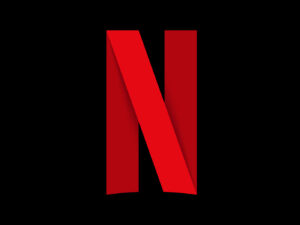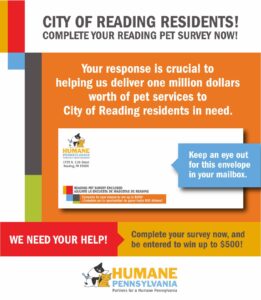by: Karel Minor, CEO/President of Humane Pennsylvania
There is a risk in charitable service work to decide what people need and who needs it without actually asking them. That makes sense since as service delivery organizations, we are generally experts at what we do and we have the experience to think we know who needs that vital service. The only problem is we are often wrong.
While charities are different from for-profit businesses in crucial ways, imagine how well a great business would survive if it didn’t seek out a better idea of what their customers wanted and instead just kept giving them the same, great old thing. You don’t need to imagine too hard. Just think of Blockbuster Video. Their business model no longer worked in the world of digital access to entertainment and they didn’t change to adapt to new consumer desires. And now they are gone.
Some businesses do adapt and change to pursue the preferences of their customers. Netflix started as a company that mailed(!) you DVD’s(!!) of movies through a tiered subscription service(!!!). Can you even imagine now waiting to get an envelope with a physical copy of a movie in it based on whether you paid enough to have one, two or three movies at a time? That would be a ridiculous model now, but it helped kill off Blockbuster.
model now, but it helped kill off Blockbuster.
Netflix was almost killed off when video on demand made it possible by faster internet speeds. But instead of being the next Blockbuster, they figured out what people wanted next. They became a giant of today, not a relic of yesterday. Imagine if they had just stuck to their guns and their old business model without surveying the needs of the marketplace.
It’s a lesson I take in my charitable world for two reasons: 1. Netflix figured out what people wanted and how to give it to them, and 2. Netflix didn’t abandon one model to chase the next new model. They transitioned to a new one while still embracing the old one effectively. It turns out the still mail out DVDs. Who knew? A for-profit company may go out of business when their product becomes obsolete, like the whale oil companies went out of business with the rise of petroleum alternatives. Or if they are lucky, they can transition into new markets, like Netflix did.
Charities face issues of obsolescence, too. The “March of Dimes Movement” is an old standard example of how a charity can respond to changes. The March of Dimes was founded to fight polio. When a vaccine allowed the US to completely overcome the disease, they had to decide what their purpose was since they couldn’t exist to fight a disease that no longer existed. They turned their focus to fighting birth defects, and still exist with that focus today.
Unfortunately, charities are often bad at surveying what the real needs of the day are, as well as who needs them. We say we don’t sell products, we provide critical services, so we don’t always learn from the lessons of the for-profit world. We are sometimes so wrapped up in our work we don’t look outward to see what is changing in our industry. That doesn’t make a charity bad, it just means we are kind of bad at doing that. What I think is bad is when we make the mistake of not actually asking people what they need and how they need it delivered to be most effective.
When we decide in advance what the need is and who needs it, we are likely to provide the wrong services or services that are right, but delivered in the wrong way. We might be right to think this or that group needs this or that service. Or we might be wrong, and we may be ineffective or end up applying Band-Aids when a cure or, better yet, a prevention is within our grasp.
How do you determine what people – or animals – need, you ask?
Humane Pennsylvania just conducted a full survey sent to every one of the 30,000 households in the City of Reading to determine the needs of pets and their caretakers, thanks to the generosity of the Giorgi Family Foundation. The survey, which was developed with the assistance of experts from Penn State University, provides an extremely high confidence interval and low margin of error. We are still crunching the numbers with the help of experts from Albright College (we love higher ed!) and will be sharing them soon.
The goal was to see what the community thought they needed, what they felt they didn’t have access to, or what pet related issues they felt caused stress for them or their family. We asked everyone, not just “poor” people or this group or that group. We asked all people.
The answers were surprising. A lot of it made sense. People at lower incomes shared that they had a harder time affording the cost of food and veterinary care. But we also saw that a large number of people at higher income levels, levels which are not generally targeted by “charity” veterinary services, expressed concern of these costs, too. And that these costs had resulted in an inability to pay for or to have to choose between pets and family necessities. It turned out far more people may need help than we thought or were even attempting to help. To quote Big Bird, “Asking questions is a good way to find things out.”
Fortunately, this has served to reinforce the work Humane Pennsylvania has been doing to ensure that meaningful access to veterinary care and other supports are available to all, through a continuum of services. Until now, we just didn’t have the data to prove it. To quote a t-shirt, “In God we trust. All others bring data.”
Humane Pennsylvania is dedicated to helping animals and people, in old time-tested ways like adoption and in new ones like community access to veterinary care, supported by fact and data. We try to do it by redefining the problems we seek to overcome, not by predefining the problems and solutions. We do it because we know it’s the best way to help the most animals and people, in the most cost effective and impactful way. We know we can love animals and hug puppies and kittens, and also be rigorous and face ever-changing realities and needs in our community. We think doing one well requires doing the other well, too.
We also do it because we want our organization, and the entire animal welfare sector, to go the way of Netflix, not Blockbuster Video.

